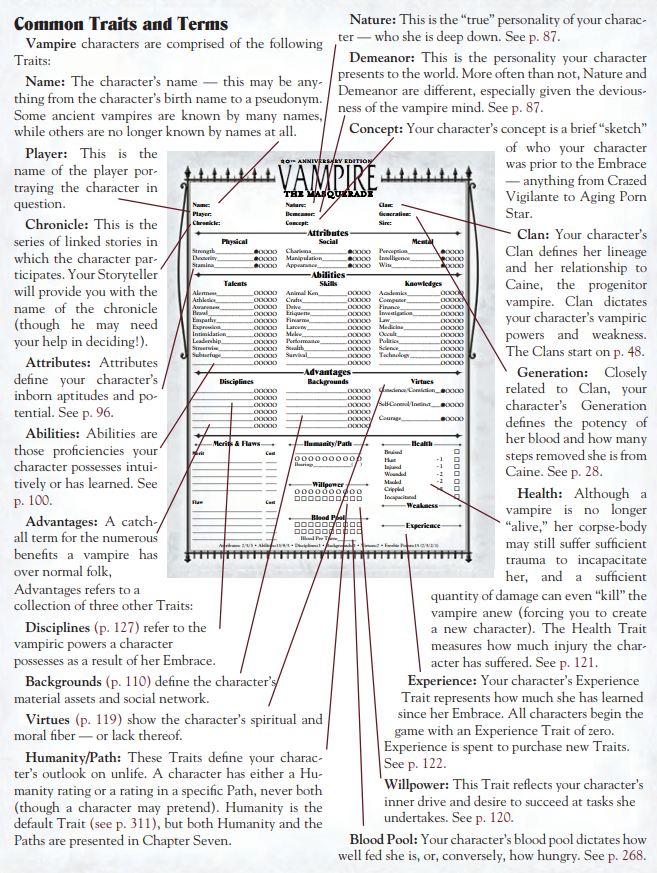



This website was built by Miles, starting in July 2023. Some work on this site was written by me, and some was not. Individual pages have credits and attributions. Much of the writing on this site was sourced from the original White Wolf Wiki as well as the VTM v5 Paradox wiki. This site was made for personal use, but I hope you find some use in it. View at 80% zoom.